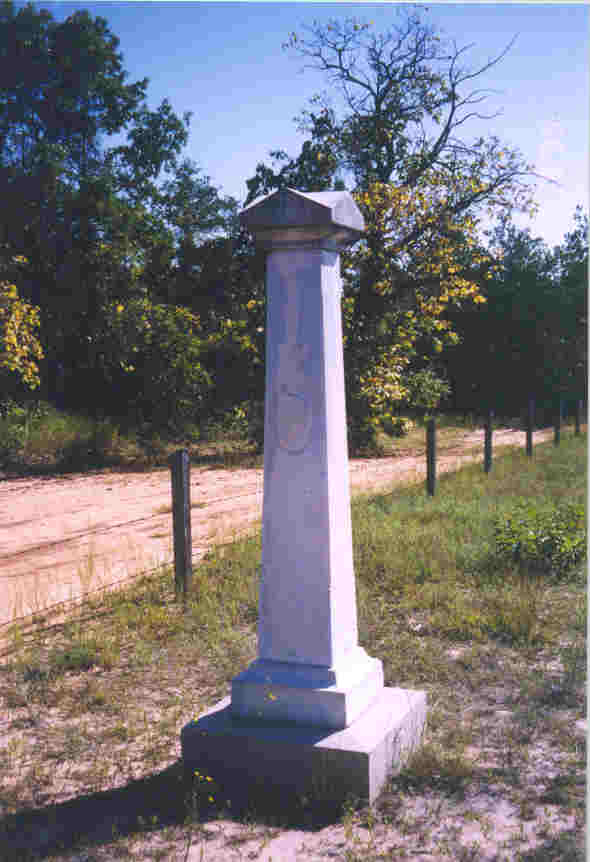
|
Home About This Site Bibliography Contact Us
|
Linwood Methodist Church Cemetery
Located on Fort Gordon Augusta, Georgia by Russell K. Brown 
Hidden away among the pine forests that blanket Fort Gordon’s training areas is a small fenced-in enclosure of burial sites. Once the cemetery of a country church called Linwood Methodist, it is now designated by the military simply as “Cemetery No. 30.” This is one of 45 cemeteries on the post according to Fort Gordon's Directorate of Public Works. The Linwood Community was in a section of western Richmond County known to its inhabitants as Pinetucky. Henry D. Leitner, a farmer and sawmill owner who also was a druggist in Augusta and postmaster in Berzelia, was a prominent citizen there. A stream ran through the community; it was called Sandy Run. A small body of water, formed where the stream was dammed, was Leitner’s Pond. Henry Leitner’s sister, Catharine, and her husband, Daniel McCormick, lived nearby. Other common family names in the woods were Blackstone, Palmer and Inglett, Many of those old-timers are buried in Cemetery No. 30 and other small plots throughout the woods. When the U.S, government took over Pinetucky for Ft. Gordon in 1941 and forced the remaining residents to leave, the army promised to preserve and maintain the burial grounds, and they still do. The Linwood Methodist church dates to the 1830s, at least, and may be even older. Catharine Leitner McCormick, born in 1812, took it upon herself about 1845 to start a Sunday school for the young people who had no other means for religious education. At first, classes were conducted in an old log cabin. Catharine barred no one because of age. Some of her pupils were illiterate farmers; she taught them reading and writing as well as Bible studies. The fame of her school grew and people came from Columbia and Jefferson counties as well as from Richmond. While teaching class, Mrs. McCormick also collected pennies from her charges. In 1857, after 12 years, she had enough money to build a new church and school. Methodist Bishop George Pierce was invited to the opening but he was unable to attend. However, on a train trip to Augusta in 1858, he stopped at Berzelia and came to Linwood to dedicate the building. The year 1861 brought war to Georgia and to Linwood. Dozens of the local young men marched away to fight for states’ rights; twenty-three of Catharine McCormick’s charges never returned. In 1866 she started a new building fund for a memorial to them. Six years later, in June 1872, a nine-foot marble shaft on a granite base was dedicated by the Linwood Sunday School to “Our Boys in Grey.” The names of the 23 fallen soldiers are inscribed on three sides of the shaft. Some say it was the earliest Georgia monument to Confederate war dead, but that is likely not true. About 1995 Angela Spearman and the United Daughters of the Confederacy organized a rededication of the memorial. The stone was cleaned by Steve and Janice Harden. Mrs. Harden is descended from George L. Blackstone, whose name is on the shaft. The ceremony was well attended by dozens of guests.
The monument reads:
In order to visit this site you will need to get permission from Ft. Gordon officials.
References:
|
| © 2007 John Rigdon |

